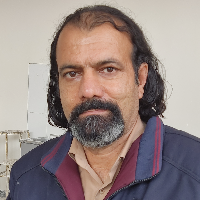Explaining the Main Form and Content Characteristics of the Shiite's Figures Based on Foundations of Shi'a Beliefs
Shiite sect (Twelver Imams), through expression of certain beliefs and teachings, values and narratives dictates a special semantic system for the Shiites, and thus gives a special and different form to all their individual, social and ritual behaviors. Since art in traditional societies is not separated from other aspects of life, and every religion expresses itself in the minds of individuals in all aspects of their lives, it can be expected that Shiite figures, as all aspects of Shia lifestyle, to be influenced by the Shiite intellectual and ideological foundations and to have special and unique features. In other words, the Shia should be known as a territory of concepts, words, individuals, beliefs and stories of which its central core of intellectual and belief is the divine legitimacy of Imam Ali (PBUH) in the case of the succession of the holy Prophet Mohammad and the Muslim leadership. The legitimacy that was transferred to his great children from Fatimah’s (his wife) Generation. Overall, the divine legitimacy of Imam Ali (PBUH) in the case of the succession of the holy Prophet Mohammad, infallibility of the Shia Imams, munificence of Imams, judgment of the Imams in the day of resurrection, intercession of Imams and special stories about some events such as Ghadir, constitute the key and significant elements and concepts of the Shia religion, the elements and concepts of which they are beyond the time and space and represent themselves in all fields of the Shia’s life. These elements along with each other make a condensed structure and particular semantic system which gives a particular look and flaunt to all of the individual and plural behaviors of the Shia and the Shiites are distinguished from other religious tendencies, in this way. Since art works are recognizable by form, content and the way of express and converse by the visual language with us, therefore the main indicators of the Shia figuress should be explained and identified by their significant and principal aspects which are form (exterior and appearance), content (intent and backend), the expressive method (applying visual elements) and narrative. What is the difference between the Shia figures and purely religious figures? Accordingly, Explaining the main forms and content based characteristics of the Shiite's figures based on Shi'a beliefs is the purpose of this study. For this purpose, in this study, firstly, in order to present a clear and precise picture of Shi'a sect, the principles and foundations of beliefs, elements and concepts constituting this sect are expressed. Then, the main and important aspects of the Shiite figures in terms of form and content, narrative and expression method are analyzed from the view of the Shiite beliefs. The proposed question is that by what indicators Shiite traits can be given to a figure? The research method is descriptive-analytic and data collection in done through library method. At the first step, it is defined based on research theoretical framework, the foundations of belief and intellectual. Then, in this regard, in order to determine the main indicators of shape and content of the Shia figures, some of these themed figures have been investigated and analyzed from the appearance and content, the expressive method and narrative viewpoints. The results of the research show that due to the only representation of a Shiite subject in a figure, it cannot be attributed to Shiite traits, but Shiite figure in aspect of form, content, expression method and narrative should be conforming basic principles of Shia. Through these indices, Shiite figures are recognizable and distinguishable from religious figures that only represent the Shia subject. According to the presented Image examples, it could be said that as the poet expresses the concept and meaning by using the words and literary devices such as likeness and metaphor, the painter also expresses his visual commentary by the help of visual elements, signs, symbols, visual and pictorial arrangements. The Shia painter can express the desired concepts of the Shia by using visual elements (line, shape, color, area, space and light), visual arrangements, signs, symbols and put the main aspects of the producer of his work (appearance and content, way of express and narrative) in line with Shia beliefs and then guide the audience to the conceptual and belief of the Shia. It seems that the results and conclusions of this study can be used to study about other forms of arts with the Shia theme and identify the indicators of each one and thereupon, providing the basis for studies for the conceptualization of the Shias principles. Hence, it is suggested that different types of art works which have the Shia content, should be investigate and analyzed based on the foundations of beliefs and thoughts.
- حق عضویت دریافتی صرف حمایت از نشریات عضو و نگهداری، تکمیل و توسعه مگیران میشود.
- پرداخت حق اشتراک و دانلود مقالات اجازه بازنشر آن در سایر رسانههای چاپی و دیجیتال را به کاربر نمیدهد.



